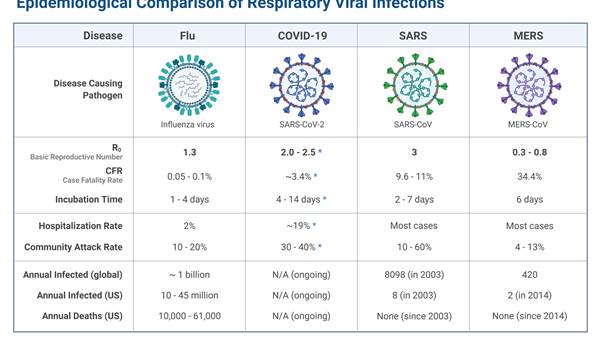What are coronaviruses?
- Coronaviruses are a large family of single-stranded RNA viruses that cause diseases in animals and humans.
- In humans, the viruses usually cause mild to moderate upper-respiratory tract illnesses such as the common cold.
- In the last two decades, more aggressive coronaviruses have emerged that are capable of causing serious illness and even death in humans. These include SARS-CoV, MERS and now SARS-CoV-2.
- Human coronaviruses were first characterised in the mid-1960s and they are mostly considered to be responsible for causing upper respiratory tract infections in children.
- In animals, coronaviruses can cause diarrhoea in cows and pigs and upper respiratory tract disease in chickens.
- These viruses are named “Coronaviruses” because of spikes found on their surface that give them the appearance of a crown when looked through an electron microscope.

Classifying coronaviruses

- Broadly, coronaviruses (CoV) are the largest group of viruses that belong to the Nidovirales order, which includes Coronaviridae among three others. Coronavirinae are one of the two subfamilies of Coronaviridea, with the other being Torovirinae. Coronavirinae can be further subdivided into alpha, beta, gamma and delta coronaviruses.
- While there are hundreds of coronaviruses, there are seven that we know can infect humans.
- Out of the seven, two are alpha coronaviruses (229E and NL63) and four are beta coronaviruses (OC43, HKU1, MERS and SARS-CoV).
- The classification of the viruses is based on their phylogeny, which is to say it reflects how these virus strains evolved from their common ancestors.
- Alternatively, coronaviruses may be classified based on serology (monitoring the immune system’s antibody response to viral exposure) as per which they can be divided into three groups from I to III. Groups I and II refer to mammalian coronaviruses and Group III includes avian coronaviruses.
When the human coronaviruses were first identified?
- One of the first coronaviruses strains to be described in the mid-60s.
- OC43 was Discovered in 1967 according to the Journal of Virology.
- NL63 and HKU1 was First identified in the Netherlands in 2004.
- SARS-CoV was identified 2003 in China (animal source not yet known, bats thought to have given it to other animals, probably civet cats).
- MERS was discovered 2012 in Saudi Arabia (transmitted by dromedary camels)
- SARS-CoV-2 has emerged 2019 in Wuhan (source not yet known, possibly bats).
What are the symptoms they cause?
Before SARS-CoV-2 and MERS, SARS-CoV was the first example of a human coronavirus that could cause serious illness in humans in the form of severe acute respiratory syndrome. Other human coronaviruses such as OC43 and 229E are known to cause the common cold, whereas NL63 is associated with serious respiratory symptoms such as upper respiratory tract infection and pneumonia.





